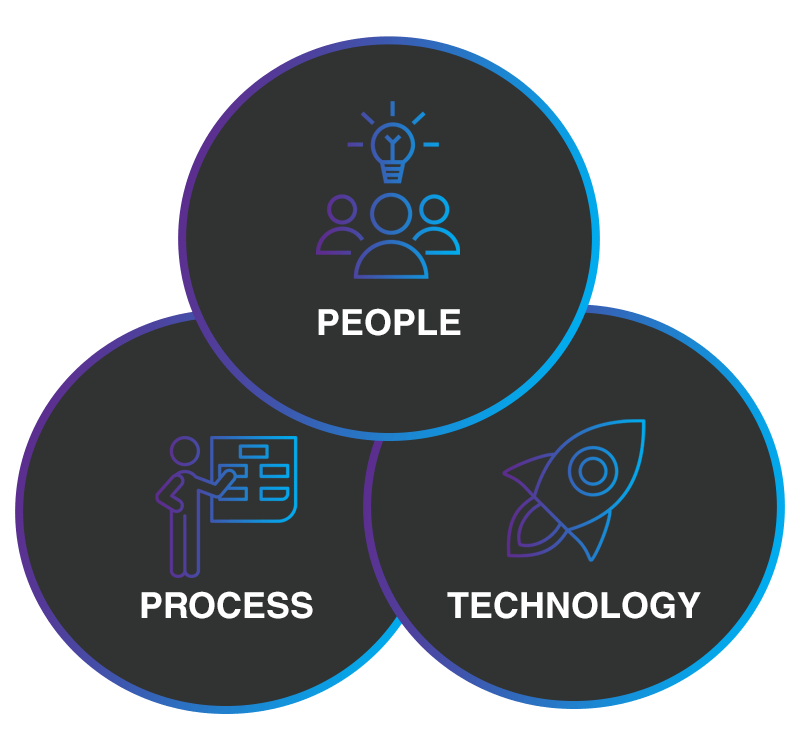Merging process and technology by prioritising experiences: the cornerstone of a modern organisation
10 June 2022
As we find ourselves in the midst of the fourth industrial revolution Sesil Pir provides an apt summary of the factors at play in her article for Forbes:
“Three large categories of force – globalisation, digitalisation and democratisation are not only impacting the way we think about, operationalise and realise our businesses, they are redefining how we experience work and beyond. We find the lines are indeed blurring between industries and sectors, processes and applications, geographies and platforms, humans and machines.”
Black swan events, cyber security threats, global talent shortage, an imminent food crisis and rising inflation across various economies all pose current and real threats to business across the world. Organisations are facing no choice other than to keep their operations lean, and do so by successfully merging process with technology.
Understanding the foundation
Created by business management expert Harold Leavitt and refined by computer security and privacy expert Bruce Schneier, the People, Process and Technology framework dates back to the 1960s. The framework has been shown as a Venn diagram illustrating that balance is the ‘sweet spot’ where all three elements overlap. Another depiction refers to the framework as a ‘Golden Triangle’ with three equal sides.

In short, the widely adopted framework consists of three elements that have an impact on one another even though they exist independently:
- People: the organisation’s talent.
- Process: the series of actions or steps required to achieve a goal or strategic outcome.
- Technology: innovative tools that should improve organisational efficiency and ability to add value.
The framework has been around for a few decades, yet its characteristics as a simple, adaptable framework has allowed it to change with the times. One such change that we’ve observed as change management consultants, is that the framework has undergone another iteration: process and technology have become one. Technology fades into the background.
Davenport and Redman in their article for the Harvard Business Review states that: “…the raw potential of emerging technologies is staggering. And while many of these are becoming easier to use, understanding how any particular technology contributes to transformational opportunity, adapting that technology to the specific needs of the business, and integrating it with existing systems is extremely complex.”
It is a well-documented fact that implementing technology solely for solving a problem is rarely a successful undertaking. One of the most popular applications of the framework has been to guide organisations’ leadership through the selection of new technology, because it goes without saying that leaders should carefully consider the fit (or lack thereof) when proposing new technology for implementation.
Furthermore, from our experience in working with various organisations across different industries, well-implemented technology fades into the background. In other words, process and technology have merged into each other and these two elements of the framework can no longer be seen in isolation, as has been the tradition in long-standing or large organisations. The entire C-suite should now have digital and IT competencies, as opposed to assigning all the responsibility to the CIO/CISO/CTO or similar executive IT roles. COOs in particular need to better equip themselves with understanding how technology and process can become one, to best guide and lead their operational efficiency.
How do you align process with technology?
As a people and customer-experience first consultancy, we prioritise people and use process as a bridge to connect people with technology. For that purpose, it is important to:
- Design a customer experience / user experience map (whether for external or internal stakeholders in your business – employees are just as important as customers).
- Map the above without technology – focus solely on process and the experience you would like to offer to your customers or employees.
- Only once the desired future state for the experience is mapped, can we consider elements such as how technology (whether legacy or new) can be aligned with the newly mapped experience. In most cases, this map also identifies or guides digital transformation correctly and help executives prioritise correctly the new tools, platforms or technologies that need to be implemented on an ongoing basis.
- Lastly, a process playbook should be created that supersedes all past standard operating procedures that effectively merges the mapped experienced with technology. The merge is now complete, and must be updated on an ongoing basis by leaders across the organisation to keep it current.





